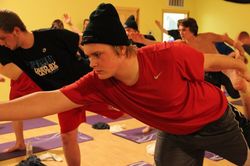 The general consensus in our society seems to be that yoga is only for women. In Yoga Fitness Dublin we are determined to change that perspective!. Once men realize the many ways that yoga can also benefit them, they have a change of heart about this yoga-is-for-women mindset. For starters, yoga works the entire body — and that’s all bodies, not just the bodies of women! Did you know that during sports, we tend to only utilize about 10 – 15% of the body, whereas, yoga provides a workout that covers every muscle, joint and organ. Yoga gives the term “full body workout” a whole new meaning! The practice of yoga oxygenates the blood, thus, creating more post-yoga energy as opposed to depleting the body of energy as is often the case after sports and gym workouts. Yoga, however, is ideal for removing stiffness in the bodies from sports and workouts. Did you know that yoga also has some “private” benefits, too? (Wink, Wink!) For instance, Guarasana (Eagle pose) sends fresh blood and oxygen to the sexual organs. Trikonasana (Triangle pose) increases cardiovascular endurance and is the only known posture that utilizes every organ, muscle, and joint in the body. Studies have shown that yoga also helps men to be more mindful during that “intimate” time with their partners. It’s well-known that a regular yoga practice can reduce stress! The mindfulness of yoga helps the practitioner identify tension held in the body and mind, and then the postures combined with conscious breathing help release it. Since men are known to have higher stress levels than women, they can certainly benefit from the stress-relieving effects of a regular yoga practice. Still not sold on how yoga can be equally as beneficial for men as it is for women? Here are a few more physical benefits yoga has to offer: Men are especially prone to low back pain, and yoga can help reduce and/or alleviate that pain. Yoga can also lower blood pressure, plus, make one smarter! Since the ability to recognize a problem is critical for the exercise of good judgment, a yoga practice may help those who practice it make better decisions about key areas of their lives. Then, with the large degree of stress reduction and mind-clearing yoga offers, one is able to see things from a new, smarter perspective. More benefits of the yoga practice for Men: - Yoga can help you develop a better breathing technique while it improves your balance, flexibility, core strength, and endurance. - If you participate competitively in sport or simply join the occasional fun run on a whim you are aware of the impact breathing can have on performance. Deep, relaxed breathing is the foundation of reducing performance anxiety and improving concentration. Yoga will help you develop a habit of breathing correctly. - Yoga practice integrations the mind-body connection and athletes can benefit from this combination of skills training. - Increase Core Strength: Yoga poses are all about building core strength. The slow, focused movements require a strong mid-section and the isometric contractions of many exercises will add a new form of resistance training to your typical machine-based workouts. - Increase Flexibility and Range of Motion: Yoga routines incorporate slow, steady flexibility exercise that is ideal for athletes. Frequent yoga training may increase flexibility, and range of motion while relieving muscle tension. Whether you are a runner or a golfer, improved range of motion can often help improve performance. - Improve Balance. Yoga is a perfect way to incorporate balance exercises into your training routine. Balance exercises are often overlooked by athletes, but are one of the most effective ways to correct muscle imbalance or body mechanic problems. With most sports and weight training routines you tend to perform repetitive motions that develop some muscle groups while others are ignored. Yoga can fix these imbalances. - It’s Great Cross Training. Yoga is a great low-impact way to cross train. Cross training is necessary for athletes who do the same sport or exercise routine year-round. Adding new exercises can help reduce injury, relieve training boredom, add variety and help recover from hard aerobic or strength workouts.
0 Comments
Benefits of Inversions in Yoga: Inversion Helps Improve Circulation The cardiovascular system is your body’s transportation system, carrying food and oxygen to your body’s cells. It also retrieves blood from your legs and lower torso, carrying it upwards against the force of gravity. Inversion allows your body to work with gravity to ease the circulation process. Calms the mind and relieves stress A full body stretch upside down can be rejuvenating and help the body to effectively relax. A study conducted by physiotherapist LJ Nose found that EMG activity (a measure of muscle tension) declined over 35% within ten seconds of inverting. Showing how helpful inversions can be in relieving the tension and pain in your muscles that is often caused by stress. Reduce Pain in Overworked Muscles Athletes prone to stiffness or sore muscles after a workout can benefit from the lymphatic wash provided by inversion. The lymphatic system has no pump, putting the body upside down helps speed up the process of removing waste from the body. Strengthens Ligaments Ligaments are flexible but not very elastic. They can tear when stretched too much. The gentle reverse loading and movement that occurs while you invert strengthens ligaments and connective tissue. Can Reduce Shrinking Most people will lose from 1/2 inch – 2 inches in height during their lifetime because of thinning discs. As a baby, your discs are 90% water. The water content in the discs decreases to 70% by age 70. An active inversion program can help maintain more of your original height. Improve Balance and Body Awareness Inversion helps to develop balance awareness, which occurs when the upper regions of the inner ear are stimulated. Enhance ability to concentrate and remain focused Inversions help increase oxygen flow to the brain, which consumes 25 percent of the body’s oxygen’s intake. More Benefits of Inversions: Cardiovascular: Flipping upside down encourages delivery of fresh blood to your heart, which provides more efficient circulation. It is similar to what aerobics may offer. These positions are also said to improve lung tissue quality. Being upright the majority of your day causes the lower lung tissue to saturate with blood, but inverting will ventilate the upper lungs, ensuring a more even oxygen-to-blood exchange that promotes healthier tissue. Being upside down also increases blood flow to your head, relieving the heart of some of its duties and temporarily lowering blood pressure and heart rate. Lymphatic: Your lymphatic system, according to "Yoga Journal," is a closed pressure system with one-way valves that keep lymph moving to the heart. This system is responsible for waste removal, immune-system response and fluid balance. When your body inverts, this stimulates your lymphatic system and, in turn, strengthens your immune system. Endocrine: Your endocrine system is responsible for hormone delivery. Inversions, especially shoulder stands, are recommended for pre-menopausal and menopausal women due to the belief that the pose stimulates the thyroid and parathyroid glands, which regulates metabolism. Most inversions will stimulate your pituitary gland, which is your master gland, and promote a positive state of well-being. Nervous: Inversions may also stimulate cerebrospinal fluid, or CSF, which is the juice of the central nervous system that flows from the brain to the spinal cord. In headstand, the top of the skull experiences pressure that could promote elasticity in the cranial bones, thus increasing the production of CSF to the ventricles of the brain, according to "Yoga Journal." Back Relief: Years of gravity's pull and spinal compression often wreak havoc on people's backs, creating pain that most cannot explain. Inverting can be a natural way of counteracting the pull of gravity. Benefits of Downward Facing Dog Pose:
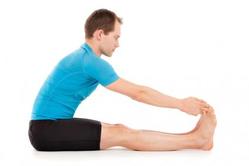 Benefits of Forward bends: · The forward bend postures have a massaging action on the organs in the upper body. Forward bends open up your back, promote total exhalation of air from the lungs by compressing the chest and also help to calm down your mind. · The forward bending postures bend the back to the shape it was when the body was in the womb that is also called the primary curve. This makes some space between the spinal vertebrae that improves the circulation around it and has overall beneficial effects on the body. · The nerves from all the different organs in the body pass through the spinal cord and the improved circulation benefits all of them in a great way. · The forward bend poses give an internal massage as well as improve the circulation to the various organs like the abdomen, pancreas, liver, intestines and kidneys. · They also help to lengthen and strengthen the hamstrings, muscles of the inner leg, make the muscles of the back supple and boost the strength of the legs and the knees. More Benefits:
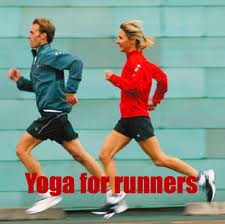 During the course of an average mile run, your foot will strike the ground 1,000 times. The force of impact on each foot is about three to four times your weight. It's not surprising, then, to hear runners complain of bad backs and knees, tight hamstrings, and sore feet. The pain most runners feel is not from the running in and of itself, but from imbalances that running causes and exacerbates. If you bring your body into balance through the practice of yoga, you can run long and hard for years to come. Although yoga and running lie on opposite ends of the exercise spectrum, the two need not be mutually exclusive. In fact, running and yoga make a good marriage of strength and flexibility. Striking a Balance Runners who stick with running are most likely structurally balanced individuals who can handle the physical stresses of the workout with minimal discomfort. Yet, many runners don't survive the imbalances that running introduces. Often, they suffer from chronic pain and are sidelined by injury. A typical runner experiences too much pounding, tightening, and shortening of the muscles and not enough restorative, elongating, and loosening work. Without opposing movements, the body will compensate to avoid injury by working around the instability. Compensation puts stress on muscles, joints, and the entire skeletal system. If you're off balance, every step you take forces the muscles to work harder in compensation. Tight muscles get tighter and weak muscles get weaker. A tight muscle is brittle, hard, and inflexible. Because muscles act as the body's natural shock absorbers, ideally they should be soft, malleable, and supple, with some give. Brittle muscles, on the other hand, cause the joints to rub and grind, making them vulnerable to tears. Muscle rigidity occurs because runners invariably train in a "sport specific" manner—they perform specific actions over and over again and their focus is on external technique. This repetitive sports training or any specific fitness conditioning results in a structurally out of shape and excessively tight body. Yoga's internal focus centers your attention on your own body's movements rather than on an external outcome. Runners can use yoga practice to balance strength, increase range of motion, and train the body and mind. asanas move your body through gravitational dimensions while teaching you how to coordinate your breath with each subtle movement. The eventual result is that your body, mind, and breath are integrated in all actions. Through consistent and systematic asana conditioning, you can engage, strengthen, and place demands on all of your intrinsic muscle groups, which support and stabilize the skeletal system. This can offset the effects of the runner's one-dimensional workouts. Body Wisdom In addition to physically counteracting the strains of running, yoga teaches the cultivation of body wisdom and confidence. As you develop a greater understanding of the body and how it works, you become able to listen and respond to messages the body sends you. This is especially important in running, where the body produces a lot of endorphins. These "feel good" chemicals also double as nature's painkillers, which can mask pain and the onset of injury or illness. Without developed body intuition, it's easier to ignore the body's signals. Awareness translates to daily workouts, too. You learn through the practice of yoga that each day is distinct, much like each run. Your energy levels fluctuate daily, even hourly, thus it's important to have a sense of your reserves. The calmness you glean from yoga practice allows you to manage and economize your energy. You can learn to intuit where you are on a given day and what resources you have to give. Therefore, you don't power drive through every workout mindlessly but rather respect your body's limitations. You can, however, maximize those varying energy levels by focusing on another nonkinetic aspect of yoga: relaxation. When you're able to bring your body into a state of repose, you become more effective at using and conserving strength. If you're in a contracted state—tight muscles, limited range of motion, chronic pain—your body requires more energy for all activities, running included. Relaxation allows you to burn energy at a more efficient level. The resulting increased vigor means a greater freedom of movement and ultimately, more enjoyment of all your physical activities. Tension is the athlete's downfall, and breath awareness is key to reducing it. Conscious breathing and Pranayama exercises, which soothe the sympathetic and parasympathetic nervous systems and relax the entire body, can be of great benefit to runners. Many runners know that improving VO2 Max—aerobic capacity—is vital for running and racing success. Runners with a high VO2 Max have the capacity to pump large amounts of oxygen-rich blood to working muscles. Maximum oxygen intake is a crucial physiological variable determining performance and endurance for runners. With pranayama and asana conditioning, you can maximize the size of your pump and the quantity of fresh blood coursing through your body. A somewhat vigorous yoga practice can increase your oxygen capacity. Pain Prevention Even the most centered and relaxed runner can face injury—the bane of all athletes. Damage to a runner's body is often the result of overuse instead of collisions or falls. It all comes back to—you guessed it—balance, symmetry, and alignment. The body is the sum of its parts and impairment of one affects them all. A bad back is going to affect your ankles just as weak knees can throw off your hip alignment. For example, shin splints are the result of a seemingly minor misstep: an uneven distribution of weight that starts with the way the feet strike the ground. Each time the foot hits the pavement unevenly, a lateral torque travels up the leg, causing muscle chafing and pain up and down the tibia known as shin splints. Knee pain, too, is related to other parts of the body. If the ankles are weak or the hips are not aligned, that can put strain on the anterior ligaments in the knees. Meant to work like a train on a track, a knee thrown off balance is equivalent to a train derailing. Due to constant forward motion, hip flexor muscles shorten and tighten and can cause hyperextension in the lower back. This constantly arched position holds tension in the back and can hamper the fluidity of hamstring muscles as well. What does this mean for the runner with pain in his lower back? Or a painful heel condition? First of all, don't ignore your body's signals. Take a break when your body needs one. Learn to intuit when rest is appropriate. Secondly, start incorporating yoga postures into the warm-up and cool-down portions of your workout. Think of running as the linear part of your workout and yoga as its circular complement. There's no need to be sidelined by injuries and discomfort brought on by your running program. Chronic injuries can eventually self-correct through a gentle yet consistent yoga practice. Remember, your body is on your side. It has an inherent intelligence to bring about a state of equilibrium no matter how many times your feet hit the pavement. 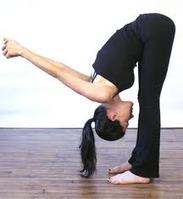 Yoga and Flexibility: According to Michael Alter, author of Science of Flexibility (Human Kinetics, 1998), current research demonstrates that individual muscle fibers can be stretched to approximately 150 percent of their resting length before tearing. This extendibility enables muscles to move through a wide range of motion, sufficient for most stretches—even the most difficult asanas. If your muscle fibers don't limit your ability to stretch, what does? There are two major schools of scientific thought on what actually most limits flexibility and what should be done to improve it. The first school focuses not on stretching muscle fiber itself but on increasing the elasticity of connective tissues, the cells that bind muscle fibers together, encapsulate them, and network them with other organs; the second addresses the "stretch reflex" and other functions of the autonomic (involuntary) nervous system. (Yoga works on both. That's why it's such an effective method for increasing flexibility)!!! Why is not recommended to bounce while we work in flexibility: The Stretch Reflex According to physiologists who view the nervous system as the major obstacle to increased flexibility, the key to overcoming one's limitations lies in another built-in feature of our neurology: the stretch reflex. Scientists who study flexibility think that the small, progressive steps that allow us to go a little deeper during the course of one session—and that dramatically improve our flexibility over a life of yoga practice—are in large part the result of retraining this reflex. To get an understanding of the stretch reflex, picture yourself walking in a winter landscape. Suddenly you step on a patch of ice, and your feet start to splay apart. Immediately your muscles fire into action, tensing to draw your legs back together and regain control. What just happened in your nerves and muscles? Every muscle fiber has a network of sensors called muscle spindles. They run perpendicular to the muscle fibers, sensing how far and fast the fibers are elongating. As muscle fibers extend, stress on these muscle spindles increases. When this stress comes too fast, or goes too far, muscle spindles fire an urgent neurological "SOS," activating a reflex loop that triggers an immediate, protective contraction. That's what happens when the doctor thumps with a small rubber mallet on the tendon just below your kneecap, stretching your quadriceps abruptly. This rapid stretch stimulates the muscle spindles in your quadriceps, signaling the spinal cord. An instant later the neurological loop ends with a brief contraction of your quadriceps, producing the well known "knee jerk reaction." That's how the stretch reflex protects your muscles. And that's why most experts caution against bouncing while stretching. Bouncing in and out of a stretch causes the rapid stimulation of muscle spindles that triggers reflexive tightening, and can increase your chances of injury. 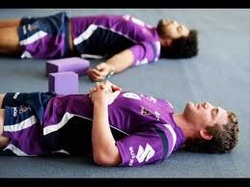 1. Flexibility One of the primary benefits of a regular yoga practice is that one is able to develop a body that is more flexible. Reaching down to touch one’s toes or extending an arm up to grab an object become much easier. With flexibility comes overall ease of movement in normal daily activities. 2. Anti-aging Yoga helps one age gracefully, keeping the joints fluid and open, allowing movement to be fluid and pain free. Skin is refreshed and organs are balanced as the forces that add to our normal aging are reversed. The common stiffness usually found in those who ages poorly is avoided. 3. Breath Yoga brings attention to the breath. Deep regular breathing and postures that gently elongate the muscles of respiration allow the breath to deepen and slow down. Increased amounts of oxygen are able to reach cells and revitalize the tissues. A slower and deeper breath aids in relaxation and calmness. 4. Strength and tone Muscle tone and strength are achieved by utilizing the body’s own weight to provide resistance. This helps in firming and shaping the overall body appearance as well as providing the necessary strength for daily activities. Conditions like Osteoporosis are avoided as bone growth is greatly enhanced. 5. Balance Balance is not something that most people think about until they have trouble standing upright. What many elderly fear greatly is to lose their balance and slip and fall. Yoga helps to stabilize us and provides a solid sense of balance. This insures that we are well grounded and not as prone to falling or slipping as we age. 6. Focus Many people are scattered and disoriented in their normal waking lives. Yoga helps to bring us back to a focal point to become clear with our goals and intentions. As we become focused we are better able to witness ourselves and achieve our goals. 7. Expansive movement Most of the movement in our culture is contractive in nature. This means that we move to tighten up and harden ourselves. Unfortunately, this is what stress and repression are already doing to us. Yoga is a system of expansive expression that allows us to counteract the forces of stress and repression in order to expand through our bodies. 8. General health For those accustomed to grabbing a pill every time they are uncomfortable, yoga offers another solution. A regular yoga practice brings life and energy to the body, improves overall circulation, as well as increases organ and gland functioning. As you stretch through the body the various systems of the body begin to have a greater capacity to function fully. 9. Cosmetic results People often report that they feel and look better with a regular yoga practice. They are able to trim down and feel strong and toned. This helps to build confidence and radiance about one’s body. 10. Body self-discovery The story of our lives is often held within the body. Every fall or accident from the past is stored within our musculature. Yoga begins to strip away the layers of holding to release old patterns. In this manner yoga becomes a marvelous tool for healing. Old and restrictive patterns of movement are replaced by more dynamic and natural ways to move. 11. Metaphor for life What do you do when difficult sensations or emotions show up in your life? Do you face this adversity or run away? Yoga becomes a metaphor to show us new ways to work through challenging sensations and emotions. We are encouraged to accept what we are feeling rather than to run from these feelings. 12. Relaxation Most people find it very difficult to relax. They are wound up nearly always and seldom let their guard down. Yoga offers us an opportunity to unwind and melt away the tension and stress that keep us locked up. As we do so we are able to allow the body to heal itself. 13. Energy flow There is a natural flow of energy that travels through us when we practice yoga. This is like an electric current that touches every cell. As the connective tissue of the body opens up the blockages that prevent energy from flowing are released. In this manner we become more open to removing these blockages. 14. Removes toxins As we move and sweat through the yoga practice toxins are released and flushed out. This occurs through the skin, breath, and the lymphatic system. Once released, we are free to allow new nutrients in to nourish us. |
Claudia Gutierrez
Physical Therapist Yoga Teacher Fitness Instructor Life Coach Dreamer... [email protected] Categories
All
Yoga Fitness BlogI am Claudia Gutierrez, owner of Yoga Fitness, originally from Argentina and proudly Irish Citizen since 2012. Archives
November 2021
|
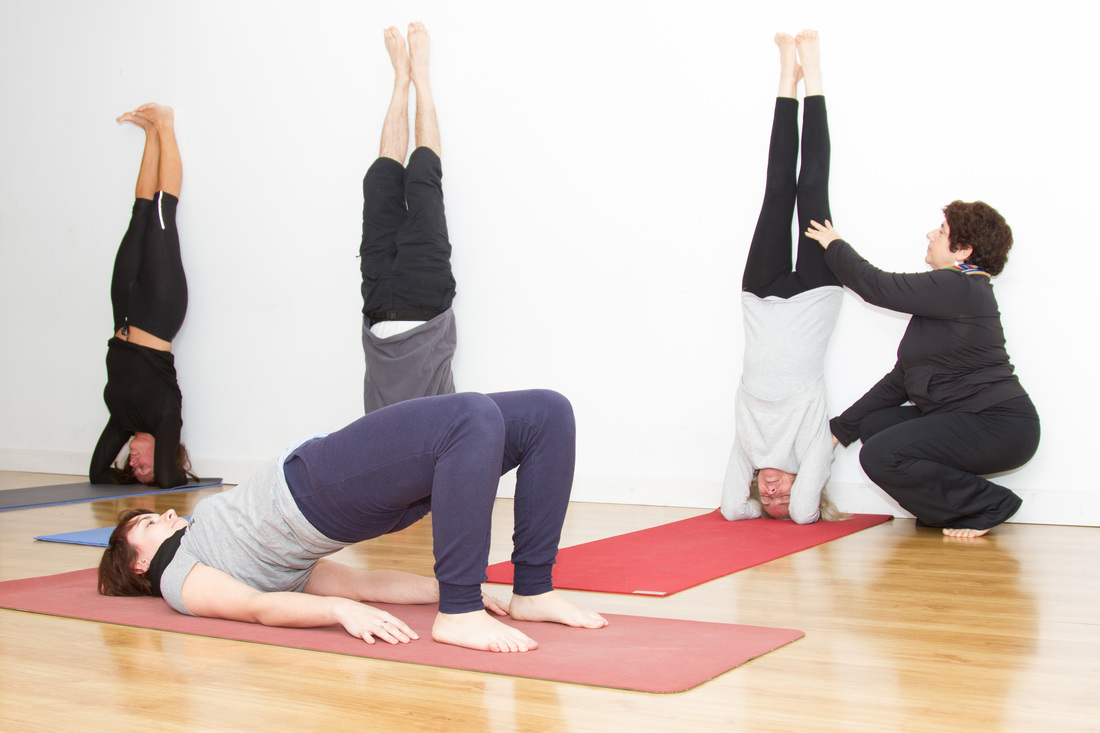
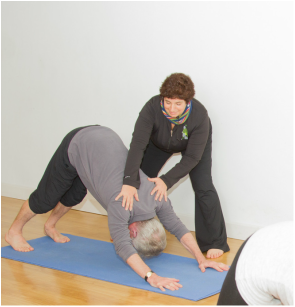

 RSS Feed
RSS Feed
